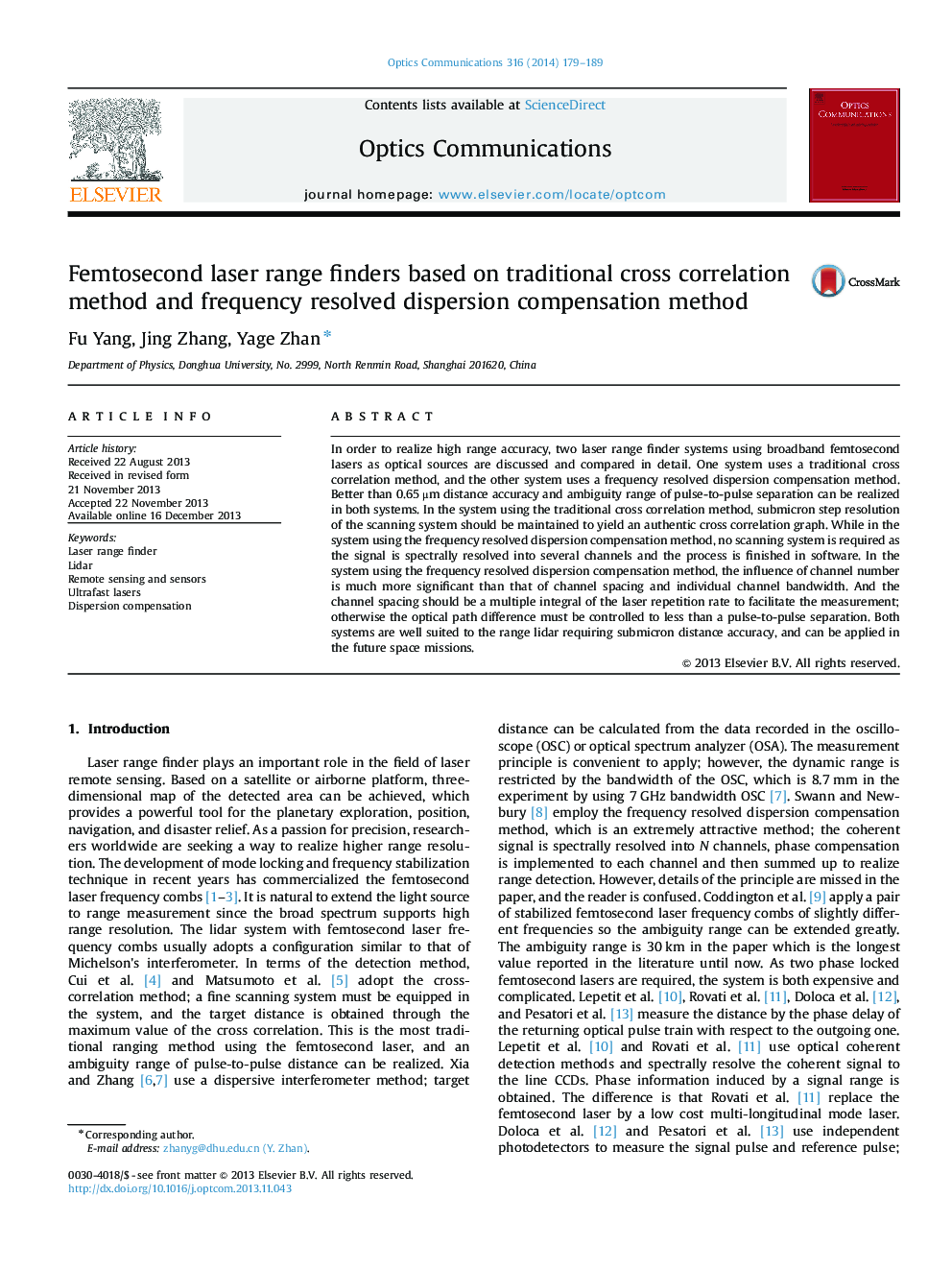| Article ID | Journal | Published Year | Pages | File Type |
|---|---|---|---|---|
| 7931510 | Optics Communications | 2014 | 11 Pages |
Abstract
In order to realize high range accuracy, two laser range finder systems using broadband femtosecond lasers as optical sources are discussed and compared in detail. One system uses a traditional cross correlation method, and the other system uses a frequency resolved dispersion compensation method. Better than 0.65 μm distance accuracy and ambiguity range of pulse-to-pulse separation can be realized in both systems. In the system using the traditional cross correlation method, submicron step resolution of the scanning system should be maintained to yield an authentic cross correlation graph. While in the system using the frequency resolved dispersion compensation method, no scanning system is required as the signal is spectrally resolved into several channels and the process is finished in software. In the system using the frequency resolved dispersion compensation method, the influence of channel number is much more significant than that of channel spacing and individual channel bandwidth. And the channel spacing should be a multiple integral of the laser repetition rate to facilitate the measurement; otherwise the optical path difference must be controlled to less than a pulse-to-pulse separation. Both systems are well suited to the range lidar requiring submicron distance accuracy, and can be applied in the future space missions.
Related Topics
Physical Sciences and Engineering
Materials Science
Electronic, Optical and Magnetic Materials
Authors
Fu Yang, Jing Zhang, Yage Zhan,
